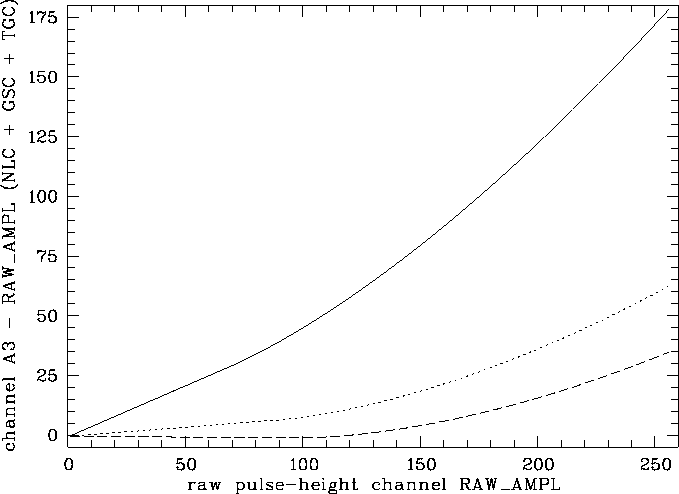| About ROSAT |
ROSAT Home Page | ROSAT Images |
|---|
The detector gain is a function of the gas state (density, pressure,
and temperature) and the HV.
Temporal gain variations are corrected by normalizing the event
pulse height by a correction function ![]() (cf. Eq. (F.7))
shown in
Fig. F.4.
This function equals unity for
(cf. Eq. (F.7))
shown in
Fig. F.4.
This function equals unity for ![]() instead of 151.
It is unknown whether this is intentional.
instead of 151.
It is unknown whether this is intentional.
Parameters:
SASS source code: package PSPC, bubble CT, subroutine CTG
SASS files: none
The cumulative effect of ADC non-linearity, gain saturation,
and temporal gain correction is shown in
Fig. F.5
as function of the measured pulse-height ![]() for three typical
gain values
for three typical
gain values ![]() 103, 135, 146.
With the corrections NLC, GSC, and TGC applied, the measured
pulse height of an X-ray photon should be independent of
when the photon is detected during the ROSAT mission.
103, 135, 146.
With the corrections NLC, GSC, and TGC applied, the measured
pulse height of an X-ray photon should be independent of
when the photon is detected during the ROSAT mission.

Figure F.5: Cumulative effect of ADC non-linearity, gain saturation, and
temporal gain correction as a function of the measured
pulse-height ![]() for three typical gain values
(
for three typical gain values
( ![]() 103, 135, 146).
103, 135, 146).